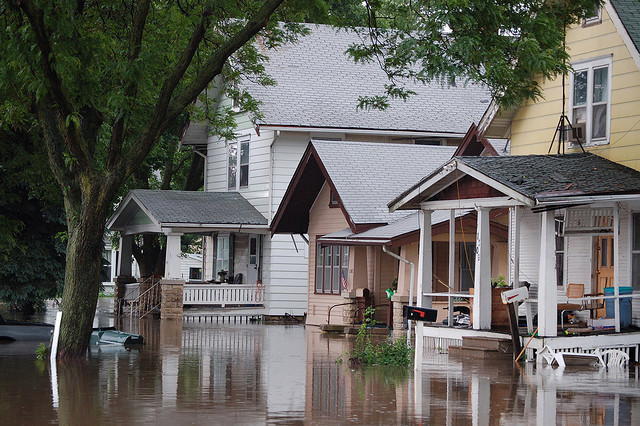How to restore your house after flood
Floods are considered to be one of the worst natural disasters. Their consequences lead to considerable damages of property. Many houses and cottages were damaged in Annapolis after devastating flood. How to restore and cleanup the house after this disaster?
Specialists from Annapolis gave us some recommendations how to cleanup a home after flood. The first thing to do is to drain the land lot. It should be remembered that despite the fact that the water is gone from the surface the soil still remains wet. Therefore, the first step on the way to home restoration is to dry up the surrounding area with the help of drainage. The most important thing is to divert water from the basement of the house, therefore it is recommended to dig the foundation around the perimeter of the house and install a proper drainage system.
Draining of basement or cellar is the next step. When the water on the surface of the ground around the house is not visible, you can start pumping water out of the basement. Do not rush to pump out all the water at once! If all the water is pumped out quickly, an excess pressure of the ground supersaturated with water may occur that leads to damaging of house foundation. Subsequently it will lead to cracks and even destruction of walls and floors in the house. So on the first day of cleanup work pump only 60 – 90 cm below the initial level, mark the water level and leave for the night. Check the water level the next day. If the water level rose and covered the mark, it means that it is still too premature to pump the water. You should wait one – two days. Then, pump the water again the same way as you did the first time. When the water stops rising, pump out the water again.
Then it is a time to get rid of mud and dirt and perform other cleanups. If you have dry sawdust, it would be good to cover the floor with it and change it periodically. The floor will dry faster! Using of fans and heaters can also accelerate the drying process, but there is a warning. Electricity in the house can be used only after complete dryout! Therefore, portable gasoline generators should be used to connect the equipment. Annapolis experts warn that turning electrical appliances on near water is dangerous.
The next step is engineering networks check up. You should carefully check up and assess the state of all pipes. If you find cracks and hollows on pipes, they should be replaced. The first few days, do not use water and sewer, the pipes may still be filled with the dirt. Check electricity and replace all the wires and plugs that were in the water.
All wet things, of course, must be dried out. Annapolis experts recommend leaving all the windows open for ventilation for a few days. Experts warn that even if the house seems superficially dry walls still contain a lot of moisture. Along with other measures which help to dry the walls of the house, you can use an effective technique called grouting. Special chemical compounds and hydrophobic substances were designed for this purpose. As a result of chemical reactions these substances create crystals, they in turn block the water flow through the capillaries on vertical and horizontal surfaces.

